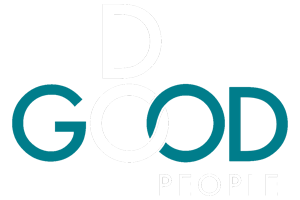Sustainability has become a core element for business transformation and an essential factor for the success of a responsible and human oriented strategy.
The sanitary crisis was a turning point for the way we understand wellbeing, specially employees’ wellbeing, putting into perspective the interdependence, as well as the existing gap, between healthy societies and economies and the environment.
Organizations have since been quite fast in implementing ESG criteria into their practices, trying to reinvent and improve themselves in a corporate world where social and environmental needs are a growing priority, and where sustainability has become a core element for business transformation.
Sustainability at the core
Something that has become increasingly clear in the last few years is that environmental sustainability is not an independent element, but rather a complex matter in need of complementary responsible practices that are altogether implemented at the core of the business.
Sustainability should apply to the company’s purpose, to work standards, to investment strategies, to working towards a circular economy model, for environmental impact purposes, value chain standards… It is in this context that ESG or SDG standards are a great starting point for commitment, but its effectiveness in the long term depends on them being applied on the real day to day.
In short, a successful transformation is one that takes every area of business and applies the necessary changes to align them with sustainability principles. This is possible through defining purpose, this is, anchoring sustainability to not only the strategy but the identity of the products, services, processes and people that encompass the organization. This last idea is especially relevant: rooting purpose in the people that actually drive the organization and can enable the necessary changes.
People sustainability
Recent studies suggest that HR departments view talent attraction, retention and engagement as some of the most pressing risks after cybersecurity. This is why sustainability should be addressed as much more than just environmental responsibility, and instead manage social concerns too, taking care of people’s mental and physical well being, from the business’ own ecosystem to the communities in which the latter operates.
And although social responsibility is not a one solution fits all kinds of deal, it is nonetheless essential to get to know and understand the workforce model.
Translating ESG objectives onto the workforce is no longer understood as a top-down alignment, but rather an environment of inclusion, co-creation and transparency that allows for people’s objectives and behavior to adapt and consequently align with sustainability. Engagement should therefore be built on trust and active listening.
What does people sustainability imply?
Creating engagement and managing a team of people sustainably is overall a matter of treating people responsibly, valuing their talent and contribution and addressing them as the foundation of sustainability itself; for example, by simply offering them proper and decent human-centric work conditions such as health, development, DEI policies and considerations…
We can talk about four different areas which to take into consideration when addressing people sustainability inside the organization:
- Sociological: Very much aligned with the idea of DEI policies, it refers to managerial processes that create and build comprehensive and inclusive work environments in which participation is encouraged and diversity is considered an advantage.
- Psychological: The same word is pretty straight forward and it refers precisely to the wellbeing of employees in a healthy as well as supportive work environment that not only provides security but strengthens and helps develop loyalty and productivity.
- Environment: The interdependence of social and environmental sustainability is very well portrayed through the development of a talent program that aims to attract environmentally responsible people, this is also known as green HR management. This includes education, training and making sustainability part of daily employee practices.
- Strategy: Part of the sustainability strategy is about building a talent roadmap that helps the organization find the right people or collaborations, gaining an almost permanent competitive advantage.

The human factor
The bottomline is, people spend a great majority of their lives in the workplace, and so we can’t forget about the same elements that make them human. HR is precisely about that, managing the human side of companies, and though productivity has been the one and only rule for too long, the paradigm is rapidly shifting with the realization that there is no productivity in an environment where the very people who have to be productive don’t feel a sense of belonging.
The same applies to sustainability; people want to feel or should feel sustainability as an indivisible part of their job, but addressing people is the main priority; only through the human factor can environmental sustainability honestly be developed and sustained in the long term. At the same time, all of the latter needs to be based upon a culture of transparency that allows for honesty and continuous improvements.
Engagement and transparency
We believe and work for transparency to be one of the key values driving the fight for climate action, social wellbeing and good governance as it is the only way to understand what we are doing wrong, what we are doing right and what it is that we are not doing yet.
Because being transparent is not only an externality to a company, or a given organization, to help build trust and reputation; it is in fact also a great learning and improvement mechanism. You cannot manage what you don’t understand. And so we advocate for transparency, integrity and precision as imperatives to the fight against climate change.
In DoGood we are convinced of the need to understand and manage efforts to achieve a sustainable transition inside an organization for the correct and efficient functioning of the business and the community it operates in. We alone cannot achieve the substantial changes necessary, but we work on the basis of collaboration, transparency and accuracy in order to bring light to sustainable actions.

In this regard, it is essential to our work to promote good corporate governance, meaning that the processes of disclosure and transparency are followed so as to provide regulators and shareholders as well as the general public with precise and accurate information about the financial, operational and other aspects of the company, including a more accurate definition of the ESG performance.
We have developed a corporate government tool that helps establish ESG impact objectives for employees in regards to the sustainability strategy of the company. Through our technology we are able to activate and track employees’ impact, creating engagement that translates into improved ESG metrics, reputational value and an overall positive impact for the environment and society.
If you want to know more about how we work to create a positive social and environmental impact, click here.







